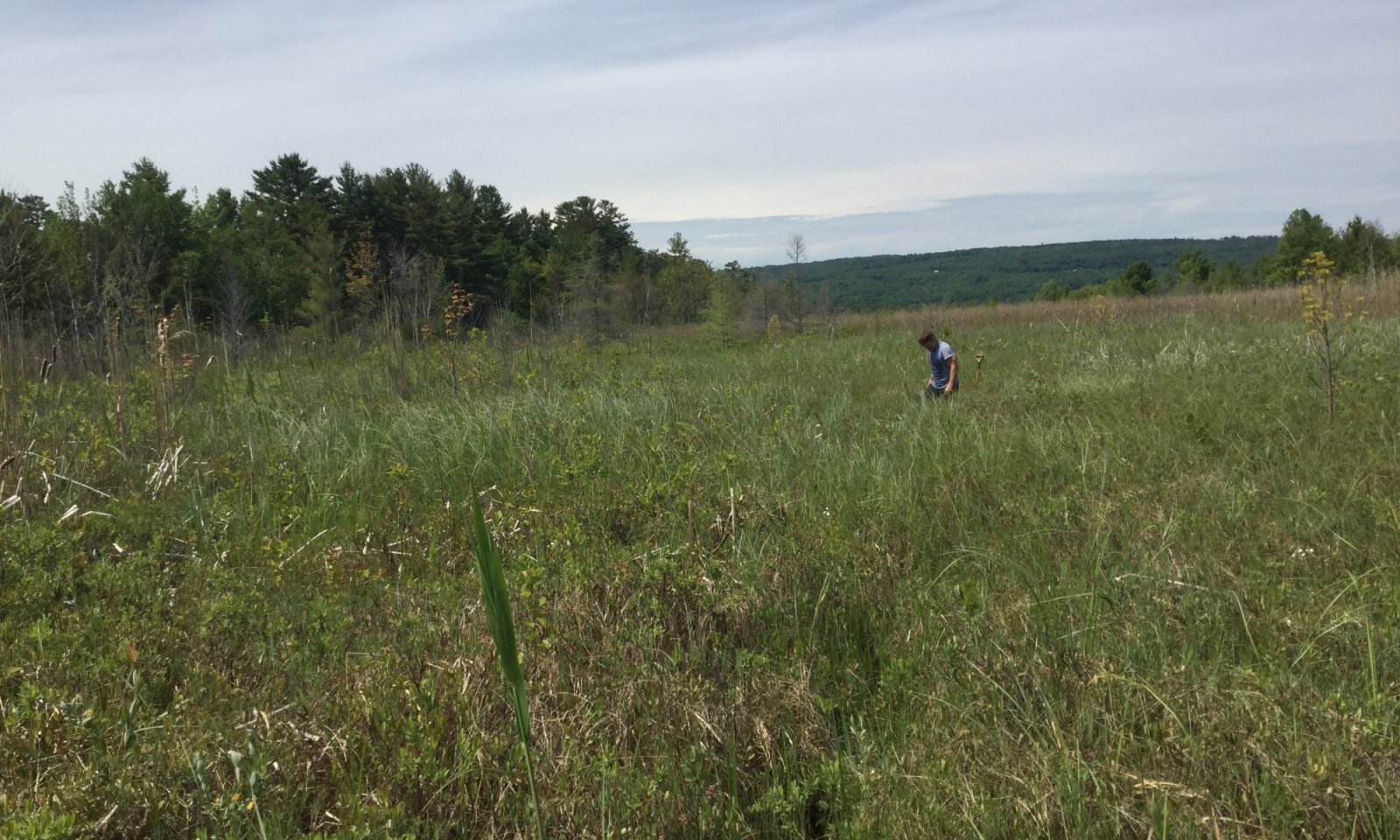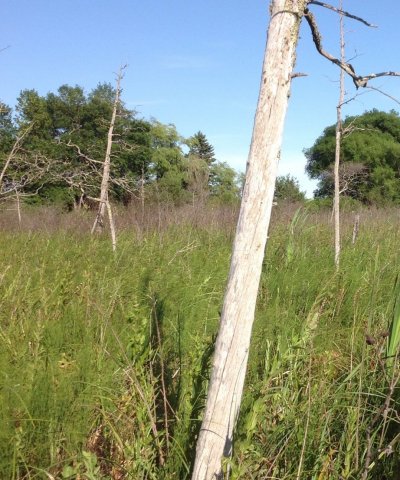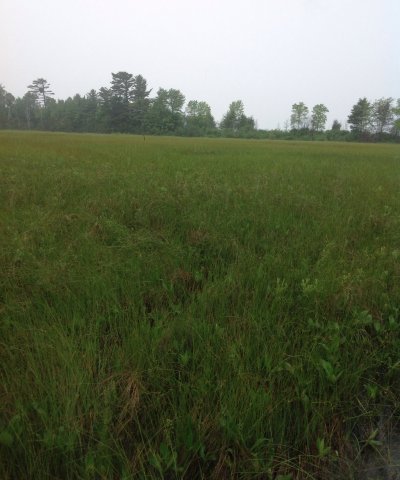

Natural Resources
Conservation Service
Ecological site F092XY003WI
Peaty Shore Fens
Last updated: 4/09/2020
Accessed: 12/06/2025
General information
Provisional. A provisional ecological site description has undergone quality control and quality assurance review. It contains a working state and transition model and enough information to identify the ecological site.
MLRA notes
Major Land Resource Area (MLRA): 092X–Superior Lake Plain
The Wisconsin portion of the Superior Lake Plain (MLRA 92) corresponds very closely to the Superior Coastal Plain Ecological Landscape published by Wisconsin Department of Natural Resources (WDNR 2015). The following brief overview of this MLRA is borrowed from that publication.
The Superior Coastal Plain is bordered on the north by Lake Superior and on the south by the Northwest Sands, Northwest Lowlands, and North Central Forest Ecological Landscapes. The total land area is approximately 1.2 million acres, which mostly consists of privately-owned forestland. The climate is strongly influenced by Lake Superior, resulting in cooler summers, warmer winters, and greater precipitation compared to more inland locations. The most extensive landform in this ecological landscape is a nearly level plain of lacustrine clays that slopes gently northward toward Lake Superior. The coastal plain is cut by deeply incised stream drainages and interrupted by the comparatively rugged Bayfield Peninsula.
During the Late Wisconsin glacial period, this area was covered with the advancing and retreating lobes of Superior and Chippewa. The landscape was rippled with moraines, but they were subdued by deposition of lacustrine materials. As the glaciers receded, glacial lakes riddled the landscape—most notably, Glacial Lake Duluth. The glacier receded eastward, exposing the western Lake Superior Basin. The ice covered the eastern basin, blocking the outlet of the lake, and continued to recede and contribute meltwaters that filled the glacial lake. The deep, red clays were deposited during this period of glacial lakes. The meltwaters from the glacier also contained sands which were deposited along the edge of the glacial lakes as beach deposits. Deep, narrow valleys have since been carved by rivers and streams flowing north into Lake Superior.
Historically, the Superior Coastal Plain was almost entirely forested. Various mixtures of eastern white pine (Pinus strobus), white spruce (Picea glauca), balsam fir (Abies balsamea), white birch (Betula papyrifera), balsam poplar (Populus balsamifera), quaking aspen (Populus tremuloides), and northern white-cedar (Thuja occidentalis) occurred on the fine-textured glacio-lacustrine deposits bordering much of the Lake Superior coast. Sandy soils, sometimes interlayered with clays, occur in some places. Such areas supported forests dominated by eastern white pine and red pine (Pinus resinosa). Eastern white pine was strongly dominant in some areas, according to mid-19th century notes left by surveyors of the federal General Land Office (Finley, R. 1976). Dry-mesic to wet-mesic northern hardwoods or hemlock-hardwood forests were prevalent on the glacial tills of the Bayfield Peninsula. Large peatlands occurred along the Lake Superior shoreline, associated with drowned river mouths.
Classification relationships
Habitat Types of N. Wisconsin (Kotar, 2002): These sites are open wetlands, so they do not truly key out to any Kotar Habitat Types. The closest type that may represent them is Picea mariana – Larix laricina / Ledum groenlandicum.[PmLLe]
Biophysical Setting (landfire, 2014): This ES is mapped as Eastern Boreal Floodplain and Boreal Acidic Peatland System; though, it is likely most represented by the latter.
WDNR Natural Communities (WDNR (2015): This ES is most similar to the Great Lakes Shore Fen.
USFS Subregions: Superior-Ashland Clay Plain Subsection (212Ya); May contain small areas of Ewen Dissected Lake Plain Subsection (212Jo), Winegar Moraines Subsection (212Jc), Gogebic-Penokee Iron Range Subsection (212Jb), and NorthShore Highlands Subsection (212Lb)*
Major Land Resource Area (MLRA): Superior Lake Plain (92)
Ecological site concept
Peaty Shore Fens has a very small extent in MLRA 92. Sites are located on the shore of Lake Superior, most concentrated on the Bayfield peninsula and the Apostle Islands. This ES occurs on very deep, partially decomposed organic herbaceous material. These sites are fens on shore complexes of Lake Superior and a major influencing water feature is groundwater discharge, causing this ES to be slightly acidic. The soils of the adjacent upland sites are often coarse-textured, which can lead to acidic groundwater. These sites are subject to the water level of Lake Superior and are saturated throughout the year, with seasonal ponding up to 15 cm above the soil surface. These sites are classified as hydric soils. Mucky Swamps tend to have a wider range of pH, occurs on the landscape away from active shore complexes, and are comprised of highly decomposed herbaceous and woody organic materials. In addition, Peaty Shore Fens often have deeper organic layers, without lithic contact. Typical vegetation includes cattails, sphagnum, rushes, horsetail, sedges, leatherleaf, and bog rosemary.
Associated sites
| F092XY006WI |
Wet Sandy Lowlands Wet Sandy Depressions are poorly or very poorly drained sandy soils that have formed in outwash and lake plains. The sites are seasonally ponded depressions that remain saturated for sustained periods, allowing for hydric conditions to occur. Primarily associated with Kinross soil series. HGM criteria: recharge; Depressional. These sites are often directly adjacent to Peaty Shore Fens and are the next step up in the drainage sequence. |
|---|---|
| F092XY010WI |
Moist Sandy Lowlands Moist Sandy Flats have a sandy mantle overlying finer glaciofluvial materials. The finer materials can cause episaturation in spring and fall, allowing the site to remain moist for some of the growing season, but does not remain saturated, nor does it have hydric conditions. These sites are higher up in the drainage sequence of Peaty Shore Fens. |
| F092XY013WI |
Sandy Uplands These sites are formed primarily in sandy outwash or beach deposits, and some are underlain by finer glaciofluvial material. Sites are moderately well to well drained, but sites with underlying finer materials may have extended saturation in spring and fall. Sites range from strongly acid to neutral and may contain carbonates. These sites are often the top of the drainage sequence of Peaty Shore Fens. |
Similar sites
| F092XY002WI |
Mucky Swamps These sites consist of saprist soils that have formed in deep organic materials in depressions. The soils are highly decomposed herbaceous and woody materials and range from 40 to greater than 200cm in depth. Sites are underlain by sandy or loamy glacial deposits. The sites are poorly to very poorly drained and remain saturated throughout the year. These are slightly acidic to slightly alkaline wetland soils. These sites are similar to Peaty Shore Fens in that they are both permanently saturated wetlands. They differ greatly in that these sites are often more alkaline, do not have direct influence from Lake Superior, and often have contact with mineral soil within 200cm. |
|---|---|
| F092XY001WI |
Sandy Shore Complex These sites are active shore complexes on Lake Superior that are heavily influenced by water levels and wave action from the lake. They range from somewhat poorly (lower, wet flats) to excessively drained (higher, beach dune). Lower sites are more influenced by water levels and wave action than beach dunes. Various sites will also range in vegetation based on drainage and influence of the lake. These sites differ from Peaty Shore Fens because they are mineral soils formed in beach deposits. |
Table 1. Dominant plant species
| Tree |
(1) Picea mariana |
|---|---|
| Shrub |
(1) Ledum groenlandicum |
| Herbaceous |
Not specified |
Click on box and path labels to scroll to the respective text.
Ecosystem states
State 1 submodel, plant communities
| 1.1A | - | Flooding frequency and duration decreases |
|---|---|---|
| 1.2A | - | Flooding frequency and duration increases |
| 1.2B | - | Very infrequent flooding |
| 1.3B | - | Flooding frequency and duration increases dramatically |
| 1.3A | - | Flooding frequency and duration increases moderately |



